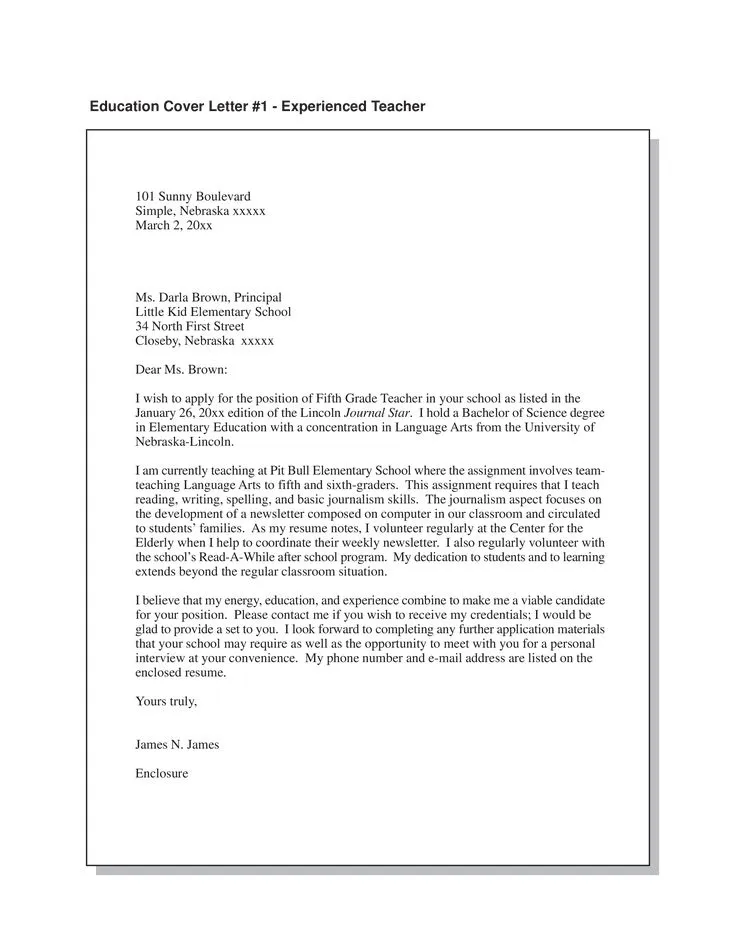Cover Letter for Education Job Top 5 Tips
A compelling cover letter is essential when applying for an education job. It serves as your initial introduction to potential employers, showcasing your qualifications, experience, and passion for teaching. A well-written cover letter can significantly increase your chances of getting an interview. However, a poorly crafted one may lead to your application being overlooked. Here are the top 5 tips to help you write a cover letter that stands out and makes a lasting impression. These tips will provide you with a great starting point to make the best cover letter possible.
Highlight Your Education and Qualifications
Your educational background forms the core of your candidacy for any education-related position. Your cover letter should clearly state your degrees, certifications, and any specializations that match the job requirements. Don’t just list your qualifications; provide context. For instance, if the job requires expertise in special education, highlight related coursework or certifications. If you possess a master’s or doctoral degree, emphasize this fact. Include any honors, awards, or academic achievements that reflect your excellence. This demonstrates that you have the necessary academic foundation, making a strong initial impression on the hiring committee. Always keep in mind to show all the things you’ve learned and achieved.
Showcase Relevant Experience
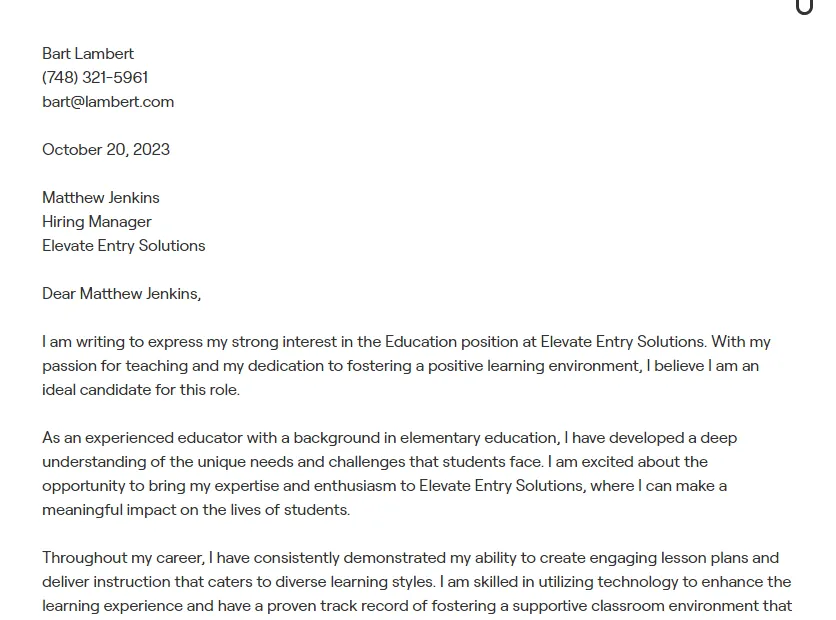
Experience is invaluable in the field of education. Focus on the experiences directly pertinent to the position. Rather than simply listing job titles, briefly outline your responsibilities and the impact you had in each role. Use the STAR method (Situation, Task, Action, Result) to provide specific examples of your achievements. This enables the hiring manager to grasp your capabilities and the value you bring to the school or district. For instance, if you’ve implemented a new curriculum, describe how it improved student outcomes or teacher engagement. Emphasize your accomplishments to make a great first impression and increase your chances of getting hired.
Tailor Your Letter to the Specific Job
Generic cover letters often fail to make a strong impression. Always customize your cover letter for each job application. Meticulously review the job description and identify the key skills, qualifications, and values the employer seeks. Then, in your cover letter, clearly articulate how your skills and experience align with those requirements. Use keywords from the job description to show your understanding of the role and your genuine interest. This targeted approach demonstrates that you’ve taken the time to understand the school’s needs and are a good fit for their team. Take your time and make sure to personalize your cover letter.
Emphasize Your Skills and Abilities
Beyond experience, highlighting your key skills is crucial. Consider both hard skills like curriculum development and classroom management, and soft skills such as communication, collaboration, and problem-solving. Provide specific examples of how you’ve used these skills effectively in the past. For example, if you’re proficient in differentiating instruction, describe how you’ve adapted lessons to meet diverse learner needs. Emphasizing these skills is vital to convince recruiters of your overall capabilities and how well they match the job requirements. Make sure that you highlight all the required skills and showcase that you have all of them.
Demonstrate Passion and Enthusiasm
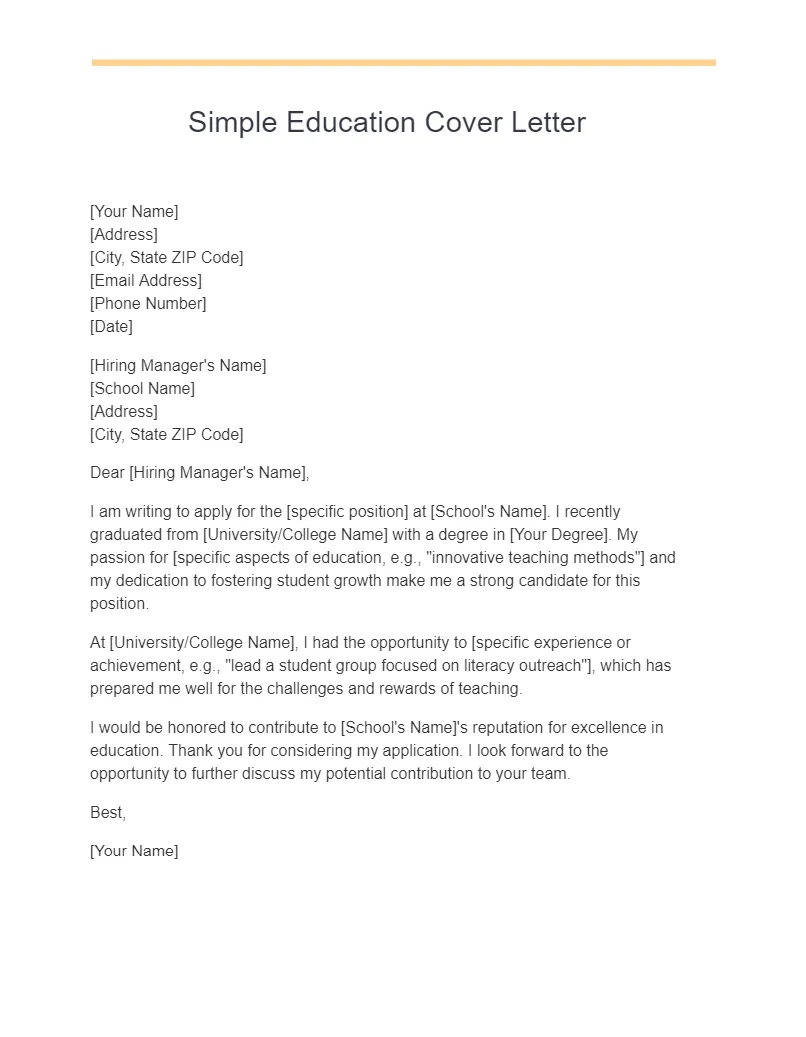
Teaching thrives on passion and enthusiasm. Your cover letter is the perfect place to communicate your genuine interest in the role and your commitment to education. Share why you’re drawn to teaching, what motivates you to work with students, and what you aim to achieve as an educator. Reference specific aspects of the school or district that appeal to you, such as their mission, values, or innovative programs. Expressing your enthusiasm helps you connect with the hiring manager on a personal level and makes you a memorable candidate. Share your motivation and you might be able to get the job!
Formatting and Presentation
The presentation of your cover letter is just as important as its content. A well-formatted, easy-to-read letter demonstrates professionalism and attention to detail. Use a professional font, such as Times New Roman, Arial, or Calibri, and maintain a consistent font size (11 or 12 points). Keep the language clear and concise, with relatively short paragraphs. The goal is to allow the hiring manager to quickly understand your qualifications. Ensure the content is well-organized with clear headings and subheadings. Proofread carefully. A well-formatted letter is also important, and make sure that you keep the content brief.
Use a Professional Tone
Maintain a professional tone throughout your cover letter. Avoid slang, jargon, or overly casual language. Address the hiring manager by name, when possible. If unsure, research it online or address the letter to the hiring committee. Be polite and courteous in your language. The tone should be confident but not arrogant. Proofread carefully to ensure the tone and language align with the employer’s expectations. Always try to keep a professional tone in your cover letter.
Keep It Concise and Focused
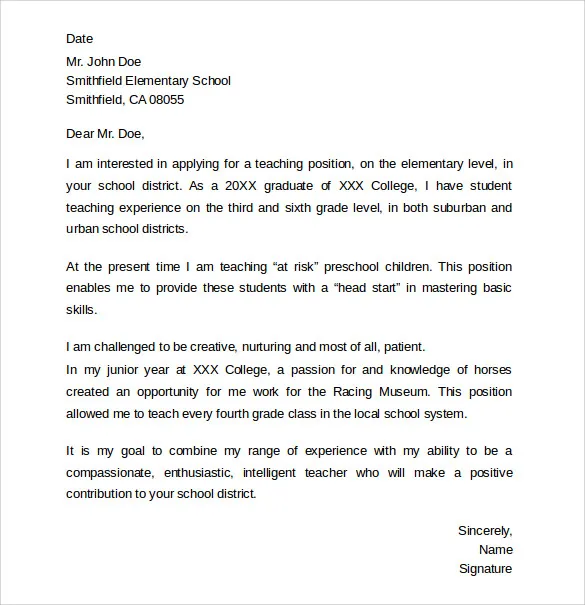
Hiring managers are busy, so keep your cover letter concise and focused. Aim for one page, highlighting only the most relevant information. Avoid repeating information from your resume; use the cover letter to expand on key points. Focus on your qualifications and their alignment with the job requirements. Make every word count and prioritize the most important information. Brevity demonstrates respect for the reader’s time, ensuring your key strengths are not overlooked. Always keep your letter brief to make a better impression.
Proofread Carefully
Errors can undermine your credibility, so proofread meticulously before submitting. Check for typos, grammatical errors, and formatting inconsistencies. Read the letter aloud to catch any awkward phrasing. Consider having a friend or career counselor review it. Fresh eyes often spot errors you may have missed. A perfectly proofread cover letter makes for a great first impression.
Closing the Cover Letter
The closing section of your cover letter is the final chance to make a lasting impression. It is where you express your interest, thank the reader, and provide your contact information. End on a positive note, emphasizing your enthusiasm and suitability for the role. The closing is important, so treat it with as much care as the rest of your letter. Make sure to provide all the required information and finish strong.
Express Gratitude
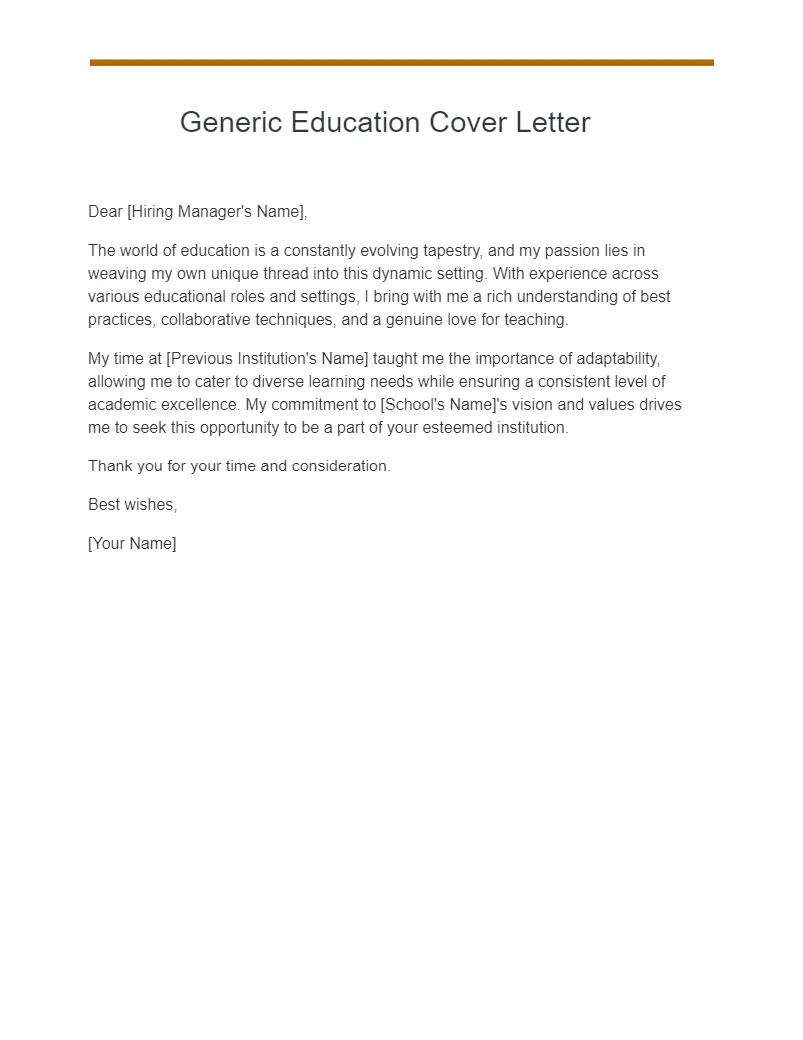
Express your gratitude for the hiring manager’s time. Thank them for reviewing your application. A simple “Thank you for your time and consideration” suffices. Showing appreciation demonstrates professionalism and respect. Always express your gratitude to make a good impression.
Include Contact Information
Provide your phone number, email, and LinkedIn profile (if applicable). Ensure this information is accurate and professional. Including your contact information is a must for the hiring manager. Make sure to add all the details.
Follow Up After Submission
Following up after submission is appropriate. Send a brief email within a week or two. Reiterate your interest and reference the position. Following up shows enthusiasm and helps you stay top-of-mind. Follow up with the hiring manager to increase your chances.
